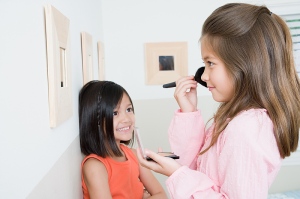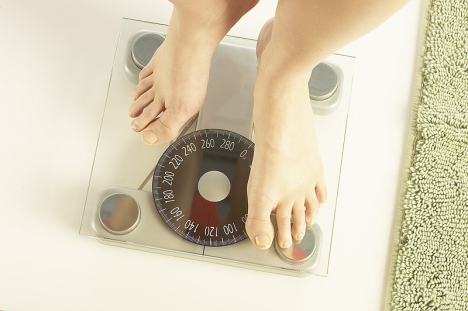
For me, it didn’t have to do with weight or body image. But for so many, it does.Whatever the reason, we’ve got to do something. Anything. Watching people point fingers and put temporary band-aids in place that aren’t being followed in the first place isn’t helping anyone. Not the teachers. Not the bullies. And certainly not the victims. When is the time?
When I was in 5th grade, I was bullied.
As a woman in my 30s, I can still say this: It was one of the worst years of my life—perhaps THE worst—because going to school was so horrible and yet I had to do it 5 days a week. I still remember the knots in the pit of my stomach—waiting on line to go into the school—waiting for the laundry list of female relational aggression to start. Everyday was the same. Target…ostracized. Rumors…sent. Eyes…rolled.
The teachers never knew what to do. I’m not sure if they were cut off at the knees, they didn’t have a plan, or the school didn’t have their back. All I know is that I was labeled “sensitive.” It was my problem—the teachers did feel bad about it but… “kids will be kids.”
So I stood there on the black top during recess, completely alone, clearly unhappy, clearly apart from the crowd, and yet…nothing. The one time something was done, I was sent to the library as the rest of the class sat in the classroom with the teacher and talked about…me. Then one of my “friends” who bullied in me in school came to get me, gave me a stare down before entering the class, told me not to “lie” and left me in her dust. Then the teacher talked to the class with me present. It was humiliating. It didn’t help. At. All.
So when I read yesterday in the Washington Post that the laws that were enacted to cope with the bullying problem, especially since the shootings in the 90s, offer practically no protection—mostly because, well, they aren’t really being enforced, I got that familiar knot in my stomach again. If you’ve never been bullied, it is the most sickening, exhausting, heart-wrenching feeling. You don’t feel comfortable walking around in your skin. You want to be anywhere but there. You want to be anyone but you.
It’s actually one of the reasons I do what I do. From creating Powerful Words to the work I’ve done with girls to the presentations I do for teachers, coaches and instructors. I want to help kids like me—I want to help kids like those who bullied me—I want to help them early so that maybe…I don’t know…maybe an infiltration of character education, and understanding of how words and actions shape lives, encouragement that adults need to get involved and take responsibility– would help a few people avoid what I went through…or worse.
But what about the anti-bullying laws? And as it is, the laws wouldn’t have even been helpful for someone like me. I was only in 5th grade. The laws only apply 6th-12th. So what about those kids who aren’t yet 12 years old and in the 6th grade? Some will never reach it. Just take a look at these sad cases:
An 11-year-old had complained of teasing and was found hanged in his Springfield, Mass in mid-April.
A 10-year-old boy hanged himself in a restroom stall in a suburban Chicago school,
An 11-year-old boy was found dead in Chatham, south of Springfield,
An 11-year-old daughter hanged in a closet of their Chicago home.
All complaining of bullying before the tragedies.
One of the big problems here is that people are quick to point the finger at who should be in charge of teaching children not to bully and inflicting consequences if there are incidents. Parents point to teachers and school officials to take responsibility, teachers and school officials point back at parents.
“A lot of this has to be handled in the home,” said Peter Daboul, chair of the board of trustees at New Leadership, the Massachusetts school where her son was a 6th grader.
But what happens when the fingers get pointed? Nothing gets done. Result? Kids suffering.
I also find it very frustrating that relational aggression is clearly given “a pass.” Even those states that are doing something about bullying (like threatening that schools will lose their funding if they don’t keep good records and transfer bullies after 3 offenses, such as in Georgia), these departments are only tracking broad offenses like fighting and threats. So much for spreading rumors, being ostracized, and intense teasing. Those wouldn’t qualify or be recorded.
There is still great confusion about how to define bullying, what’s offensive, what’s child’s play, what can lead to tragedy. What counts? Blows to the head? Cyberbullying? Taunts and teasing? “One of the questions is how do you quantify bullying? It could even be as simple as a rolling of the eyes,” said Dale Davis, a spokesman for schools in DeKalb County, Ga., where Herrera committed suicide.
Maybe we should ask the kids…who are being bullied.
“In 2007, nearly a third of students ages 12 to 18 reported having been bullied during the school year, according to data on more than 55 million students compiled annually by the National Center for Education Statistics.”
So where are in this? Just spinning our wheels until something more tragic happens that leads us to wonder if what we are doing already is the right thing to do? I can tell you now—it’s not. I mean, 55 million kids sounds like a lot to me. does it to you?
I don’t know…maybe I’m just being sensitive.

Filed under: Body Image, Uncategorized | Tagged: Associated Press, Body Image, Bullying, children, Dr. Robyn Silverman, powerful words, Relational Aggression, self worth, Teens | 3 Comments »


 Given that positive body image and media don’t often click these days, I don’t want to seem ungrateful for this fabulous shot of a normal looking woman in Glamour Magazine…
Given that positive body image and media don’t often click these days, I don’t want to seem ungrateful for this fabulous shot of a normal looking woman in Glamour Magazine…




